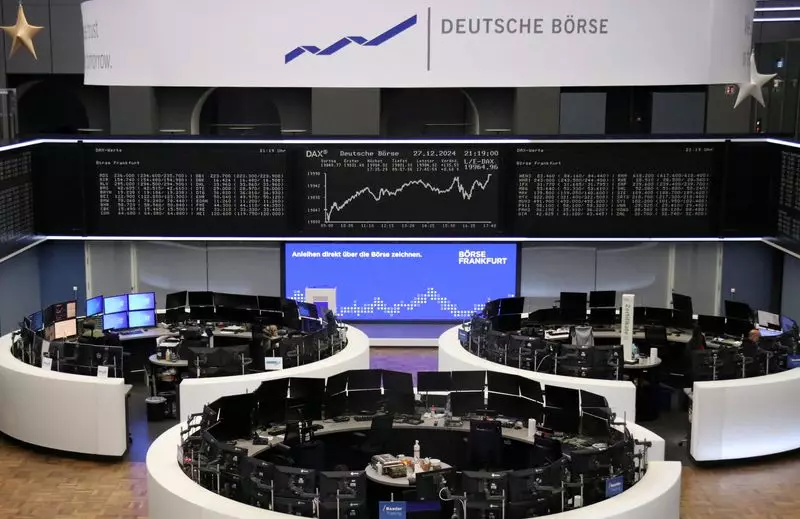European stock markets experienced a downturn on a recent Monday, mirroring the trends seen on Wall Street. The pullback is largely attributed to sustained high government bond yields, which have prompted investors to reconsider their equity holdings. This fluctuation comes as investors finalize their portfolios heading into a new year—one that has presented mixed results across various regional markets. The pan-European STOXX 600 index fell by 0.6%, with sectors such as technology and healthcare leading the decline. This retreat in share prices has emerged amidst notably thin trading volumes, reflecting a cautious atmosphere as many traders prepare for the approaching New Year holiday.
As year-end trading approaches, several European stock exchanges, including those in Germany, Italy, and Switzerland, are planning temporary closures. The trading session before these holidays is typically quieter, and this year is no exception. In the UK and France, markets will have a shortened trading schedule, which often leads to reduced activity as investors seek to lock in gains or reassess their strategies for the upcoming year. The uncertainty surrounding monetary policies for the coming year, paired with potential inflationary pressures, continues to weigh heavily on market sentiment.
Despite the current decline, the STOXX 600 is on track for a notable 5.9% increase for the year. Notably, German stocks have led the gains within Europe, realizing an impressive 19% annual rise in their DAX index, making it the standout performer among major exchanges. Conversely, France’s CAC 40 is on course for an annual decline of 2.5%. The divergence in performance reflects underlying concerns regarding fiscal issues in France and political instability, which have dampened investor confidence in French equities. Such contrasting outcomes highlight the complexities faced by European markets, especially when juxtaposed against the remarkable 25% increase of the S&P 500 in the same year, fueled by aggressive interest rate cuts by the Federal Reserve and the burgeoning tech sector.
When looking deeper into sector performance, food and beverage, as well as the automobile sectors, are anticipated to be the worst performers across Europe this year, weighed down by economic uncertainties. In contrast, banks appear to be among the best-performing sectors, reflecting a shift in investor confidence in financial institutions amidst changing economic landscapes. In the United States, the sell-off witnessed among major tech companies like Amazon and Microsoft has subtly echoed through European markets. Companies such as Siemens Healthineers have also felt the impact, with a slight dip in stock prices following strategic reviews within the firm.
As the year draws to a close, the reflective mood in the markets is coupled with a sense of caution. The mixed performance of European indices against a backdrop of U.S. market strength presents an intriguing scenario for investors. With central banks slated to reassess their policies and inflation worries lingering, European stocks may face a volatile start to the new year. The overall investor sentiment remains vigilantly wary, poised to adapt to shifting economic conditions as they arise.

